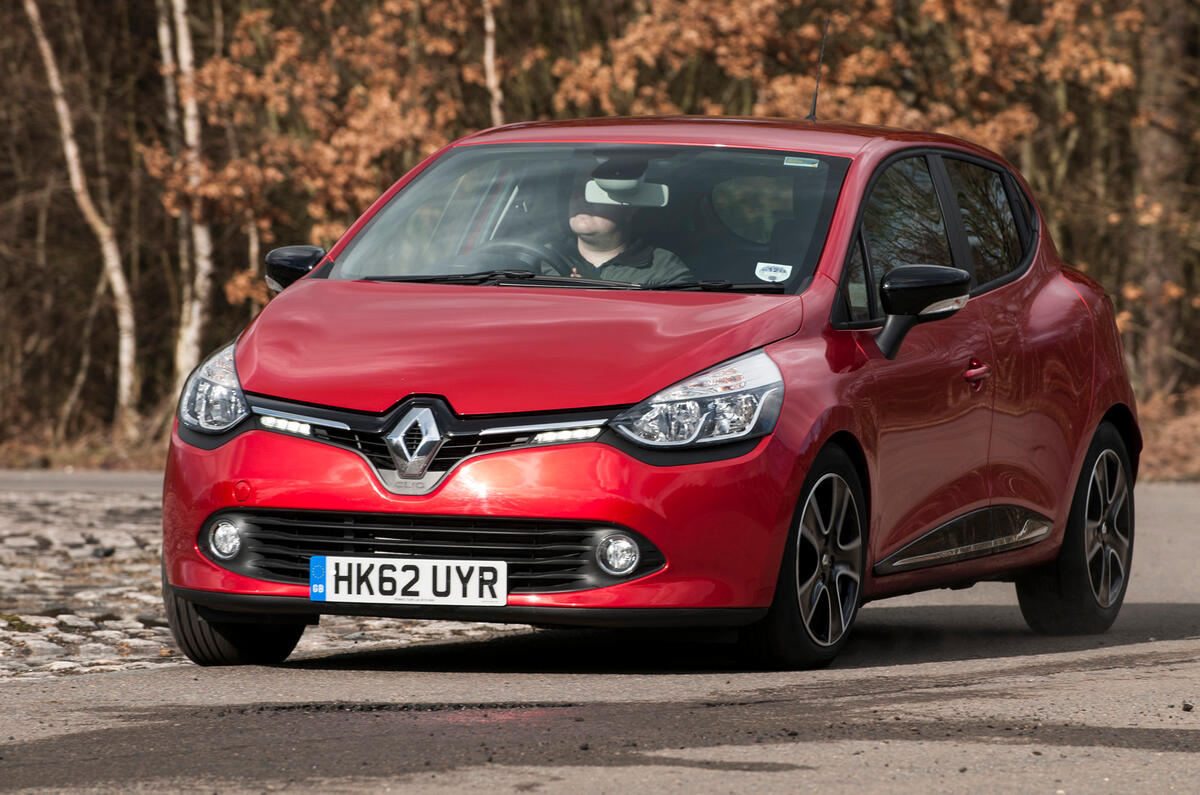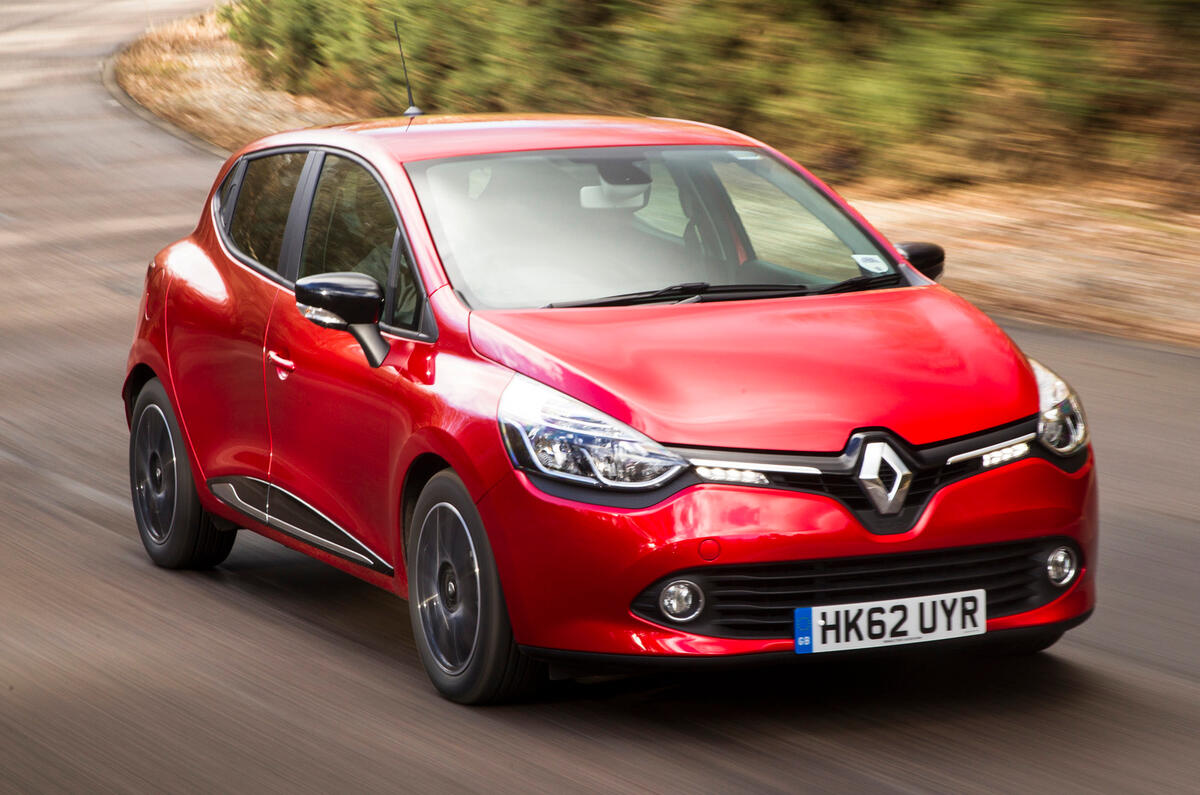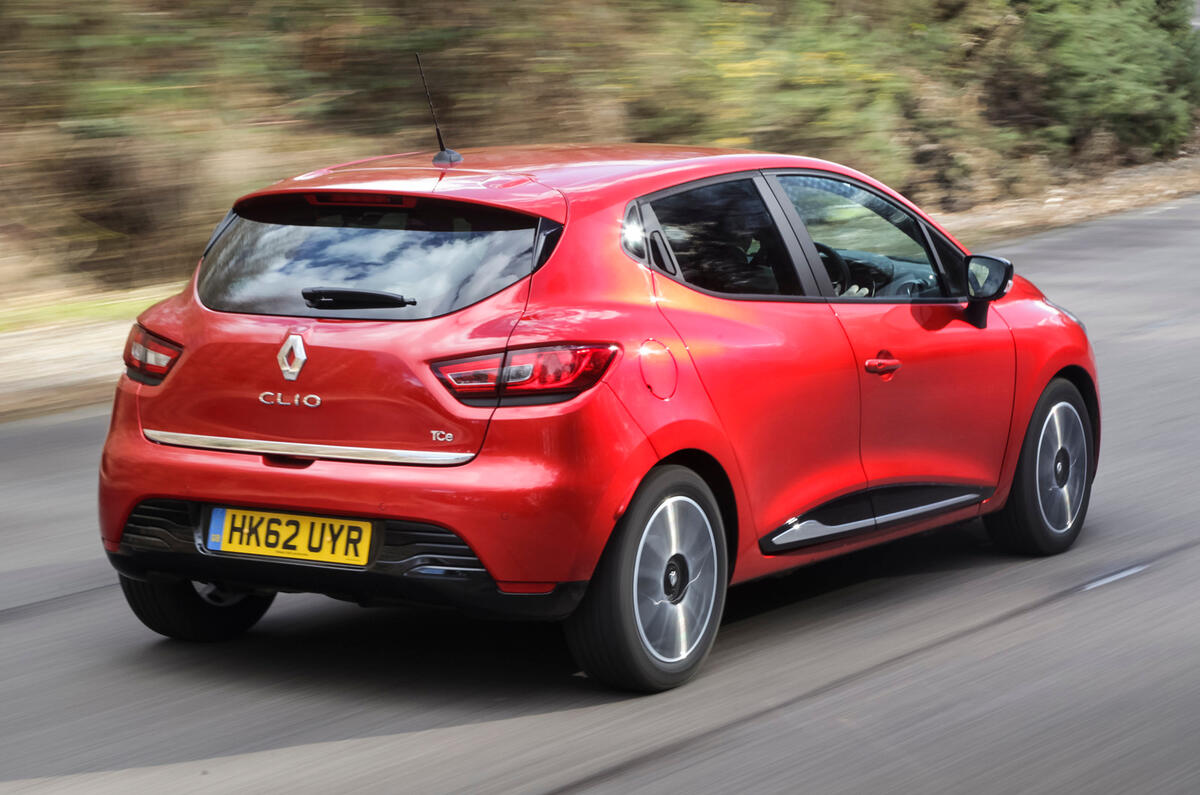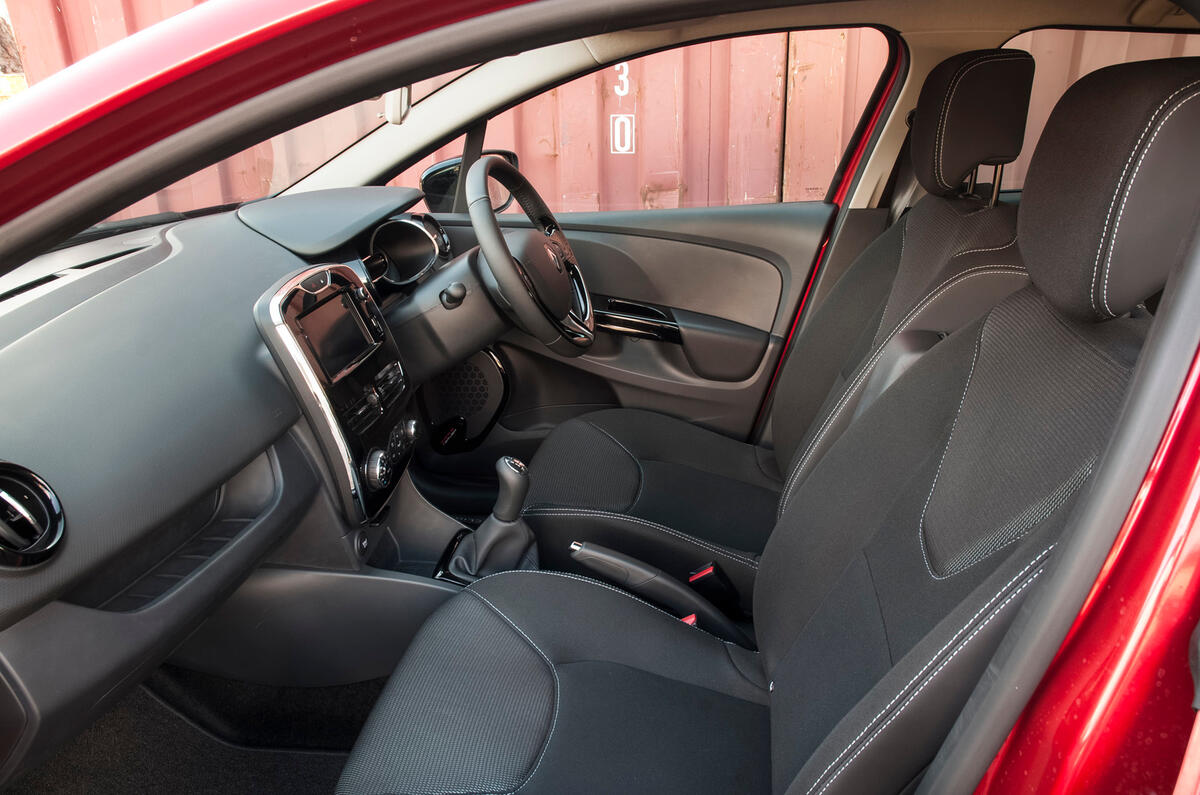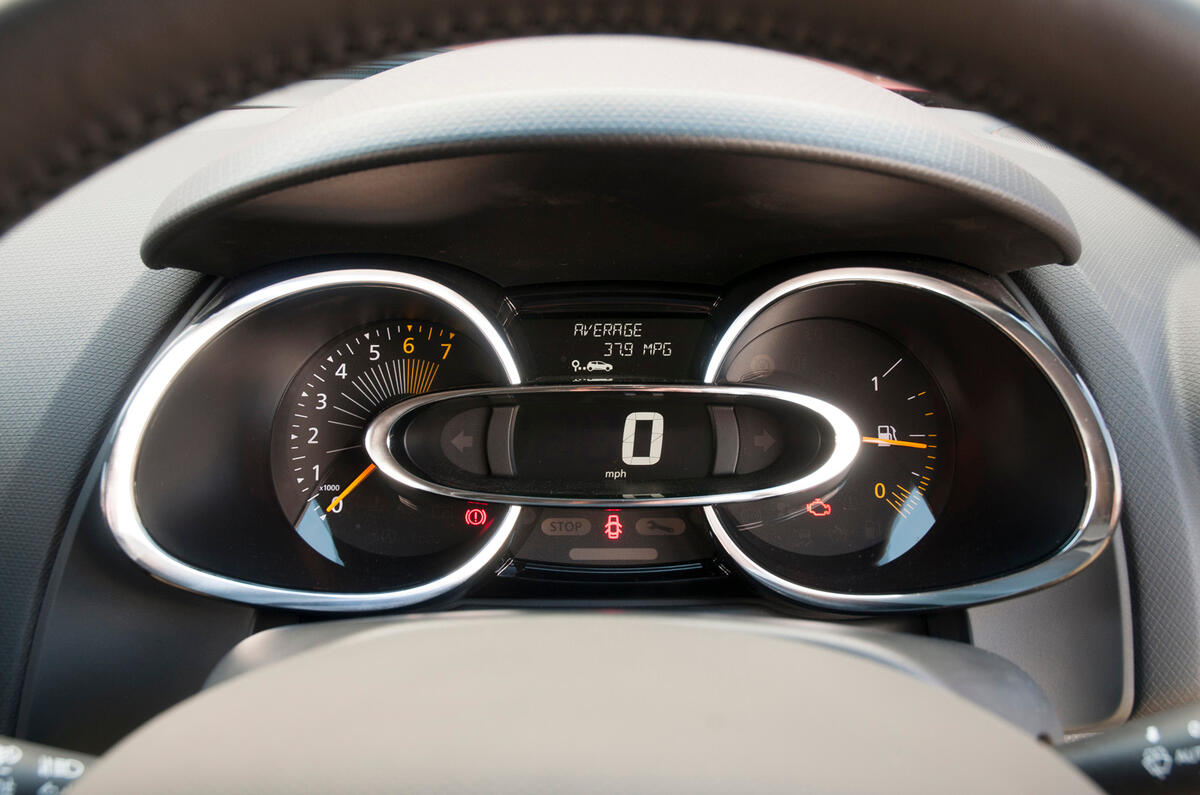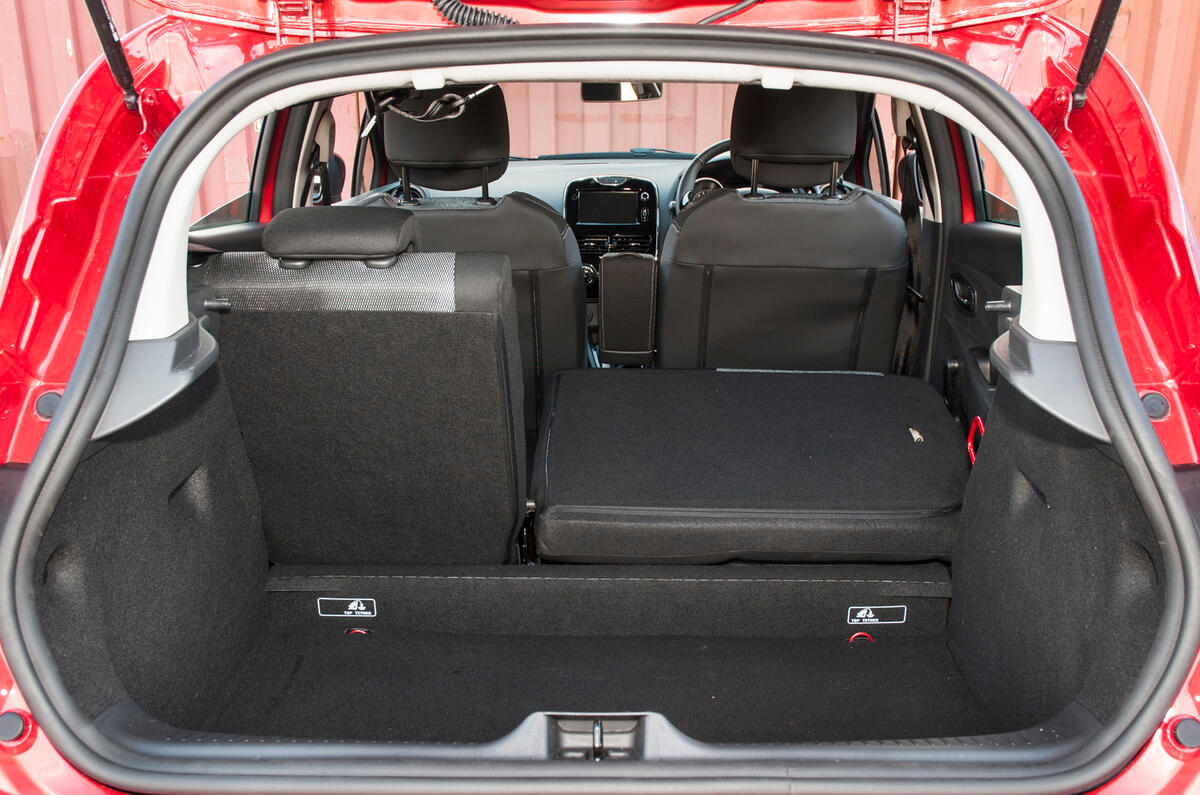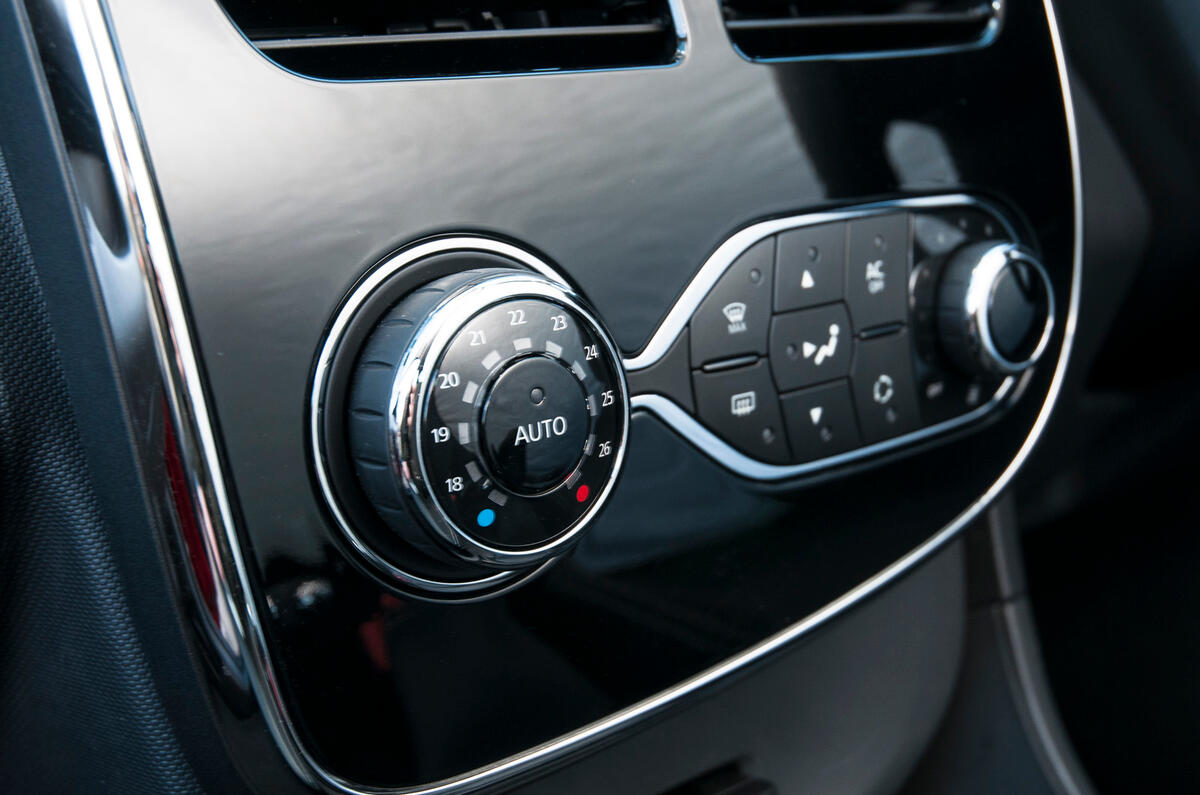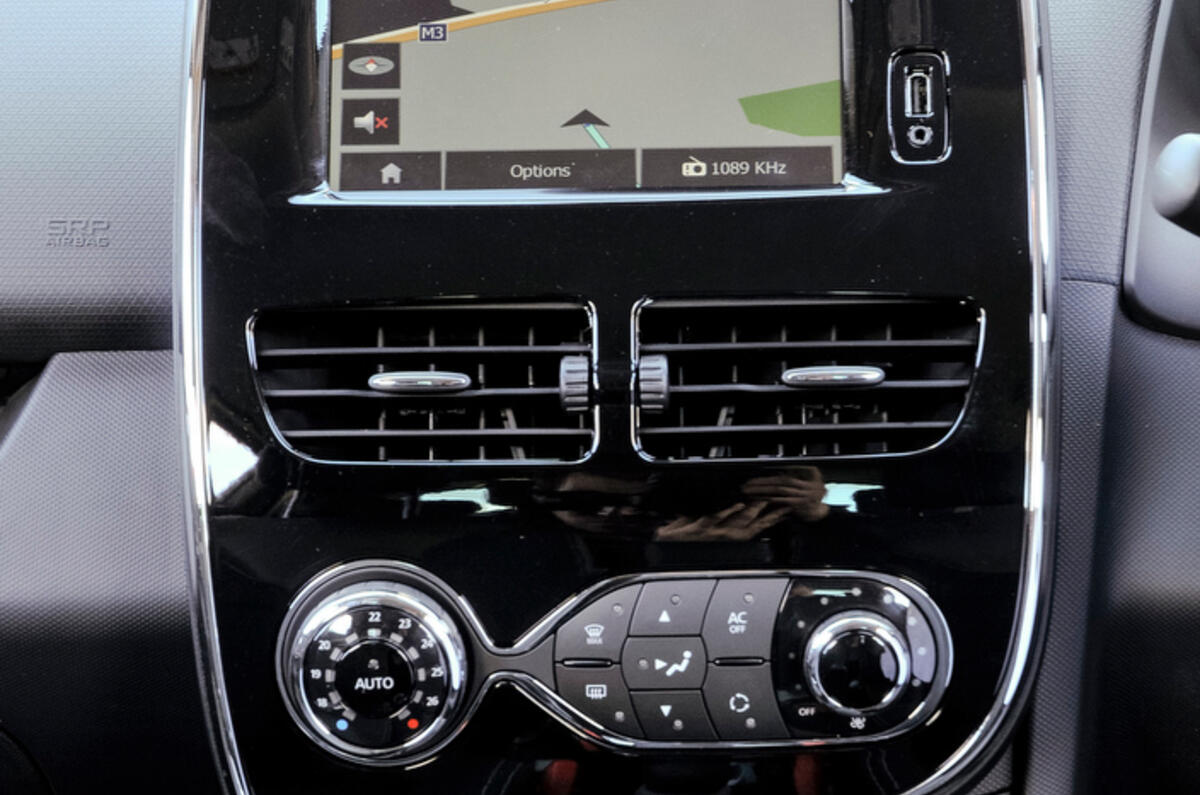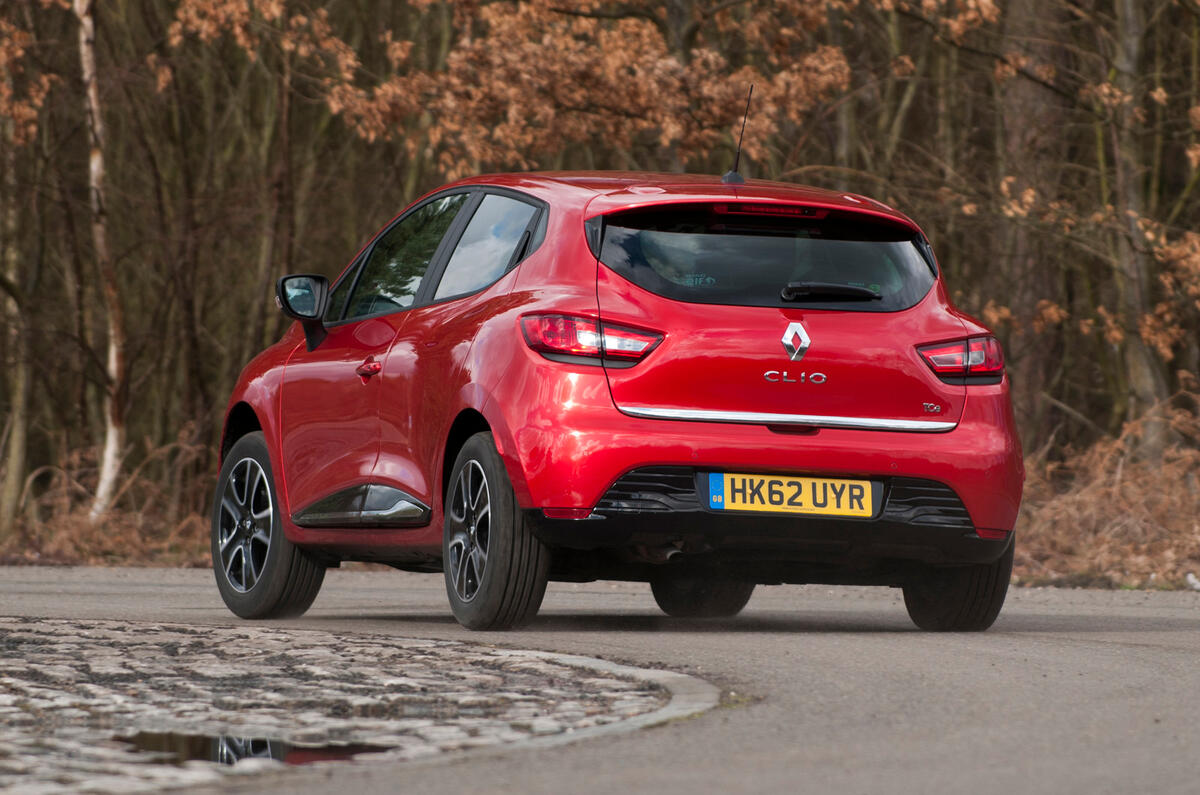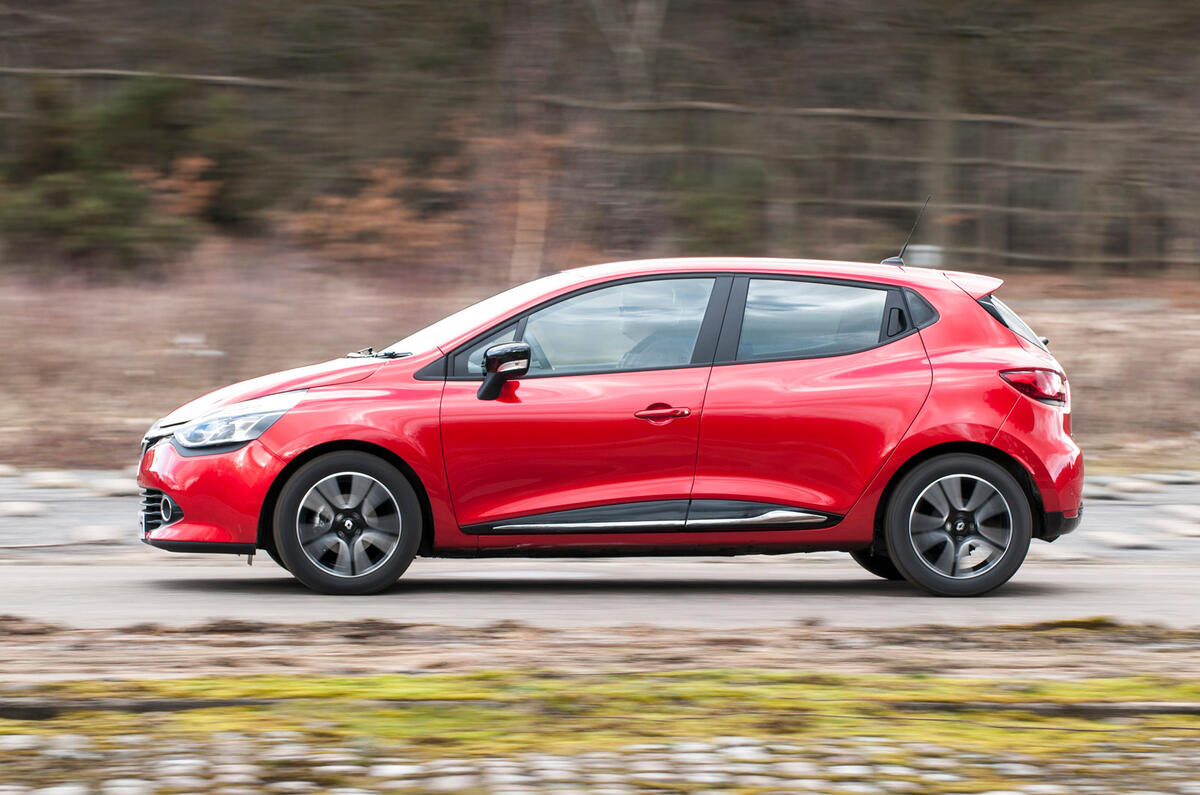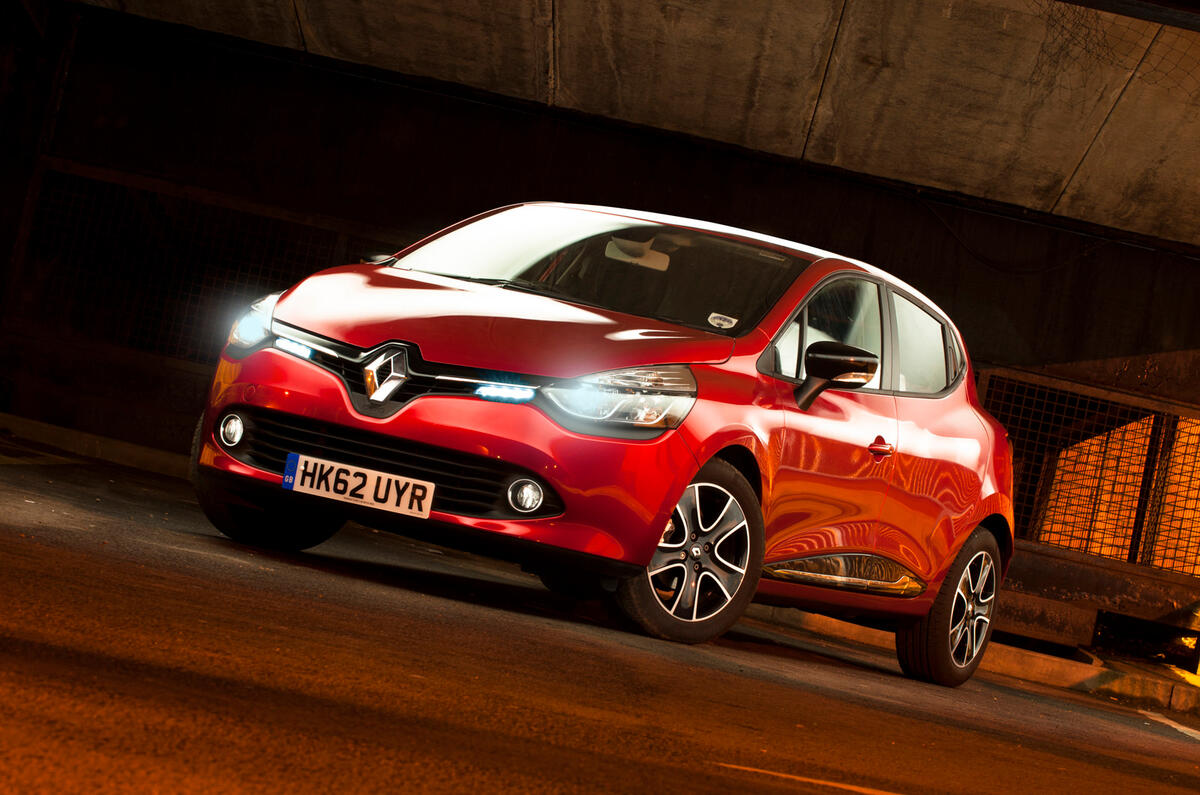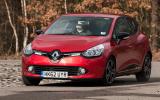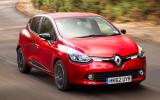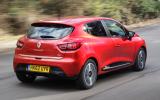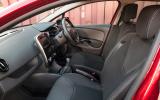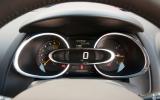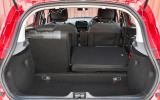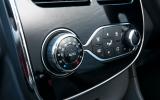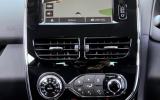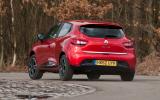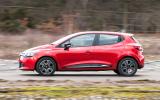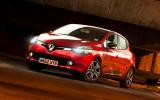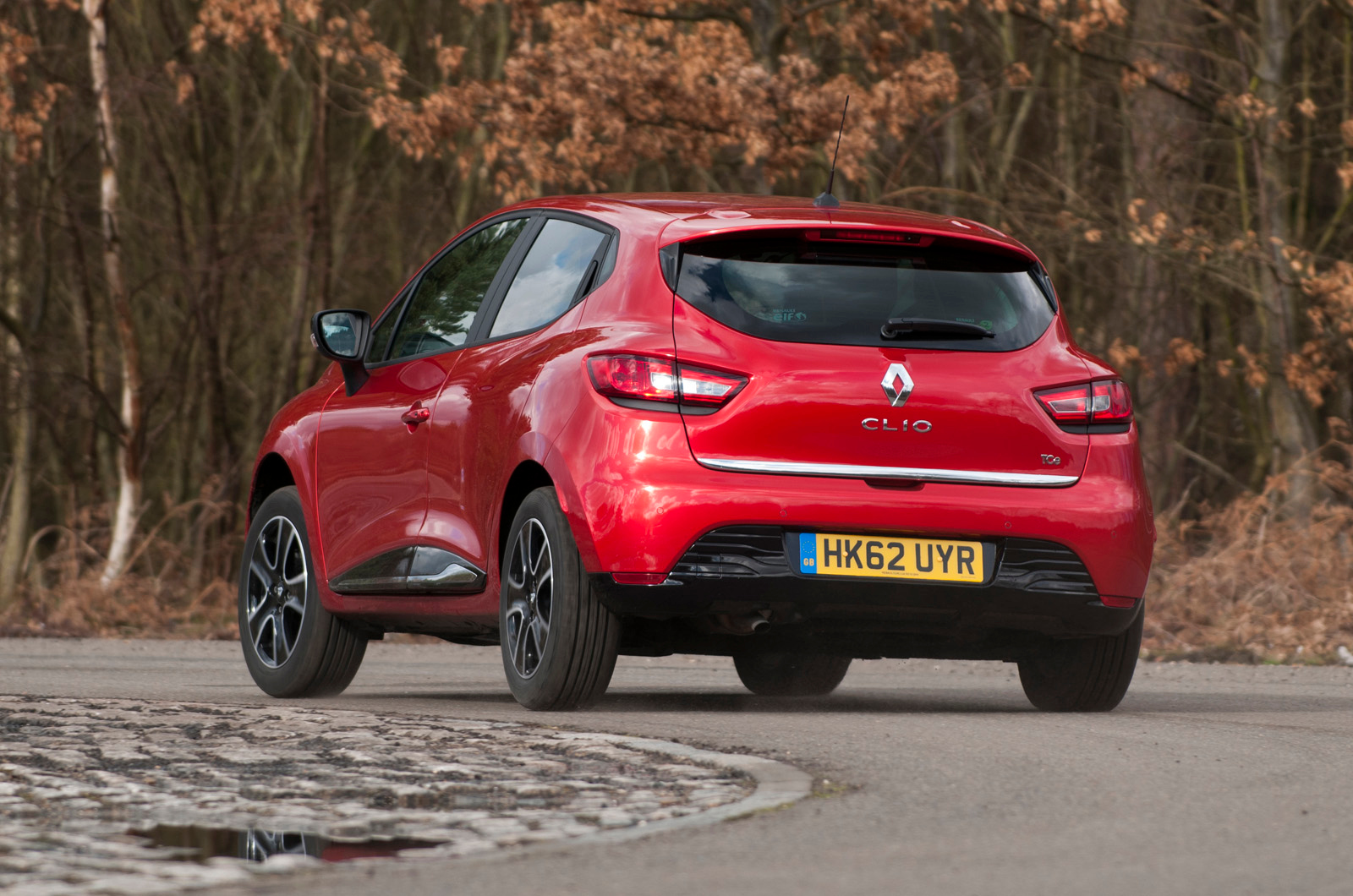Inside the Clio there's a generous amount of space and the cabin is of a particularly good size. It offers 10 percent, or a couple of inches, more legroom than you’ll find in the average small hatch, and an inch or so of ‘extra value’ headroom for back seat travellers.
For relatively large adult passengers, in the context of this class, that could make an important difference. We can get on fine with a digital speedo, and appreciate the good-sized indicators and fuel gauge.
There’s the usual quantity of cabin storage but no especially neat or clever packaging solutions. Having added interior space to the Clio with its basic proportions, Renault’s focus was clearly on injecting colour and life into the cabin, and successfully so.
The most conservative choice is a black fascia with black cloth seats, but its attractive sculptural instruments, complemented by lots of gloss black and chrome accenting, lends it an air of technical style and sophistication.
Consumer electronics are an obvious inspiration here, just as they were for the Ford Fiesta. The difference is that, while the Ford’s cabin could have been penned by graduates from Nokia and Motorola, the Renault’s is one of the converged touchscreen design generation, with clearer nods to the likes of Apple, Samsung and HTC.
In terms of function, however, Renault’s R-link system needs some refinement. Postcode entry is still woefully limited, while map graphics on the satellite-navigation system look like they’re from a 1990’s games console, not a contemporary mass-market hatchback.
Material quality levels are fine, but again they don’t quite match that level of ambition. Most of the Clio’s background cabin plastics are ordinary in their look and feel. One or two loose, creaky trims even serve to remind us of Renault’s chequered track record on fit and finish.
There’s also a certain lack of attention to ergonomic detail. The engine start-stop button’s on the wrong side of the centre stack for right-hand drive, for example, and the cruise control button is in an unintuitive position by the handbrake.
Both peculiarities will be familiar to Renault owners, but on such an important car where progress has been made in other directions, this feels like a missed opportunity to remedy them.
As for the trim levels, there are five trims for the standard Clio and two for the Clio RS models. Opt for the entry-level trimmed Expression model and you'll find Bluetooth, USB connectivity, cruise control, front electric windows, and electrically adjustable and heated door mirrors fitted as standard. Upgrade to Play and the Clio gains 16in alloy wheels and air conditioning.
The Dynamique Nav trims include keyless entry and start, auto lights and wipers, and Renault's MediaNav infotainment system complete with a 7.0in touchscreen display, DAB radio and sat nav, while the Dynamique S models add 17in alloy wheels, rear parking sensors, LED headlights, climate control and all-round electric windows.
The range-topping Signature Nav trim adorns the Clio with TomTom-powered sat nav, more speakers, front parking sensors, reversing camera and part leather upholstery.
If you are after a bit more power then the RenaultSport Clios come in two variants - the Clio RS 200 and Clio RS 220 Trophy, which both use the same turbocharged 1.6-litre engine and produces 197bhp and 217bhp respectively. The RS 200 comes with RS-designed LED headlights, 17in alloy wheels, a rear diffuser, a F1-styled front blade, a sporty bodykit and chassis set-up and an electronic differential on the outside, while inside there is cruise control, air conditioning, sports seats trimmed in dark cloth with red stitching and Renault's MediaNav infotainment system.
Upgrade to the RS 220 Trophy and you'll find Renault's full fat R-Link infotainment system, parking sensors, rear view camera, climate control and 18in alloy wheels shod in Michelin Pilot Super Sport tyres.


